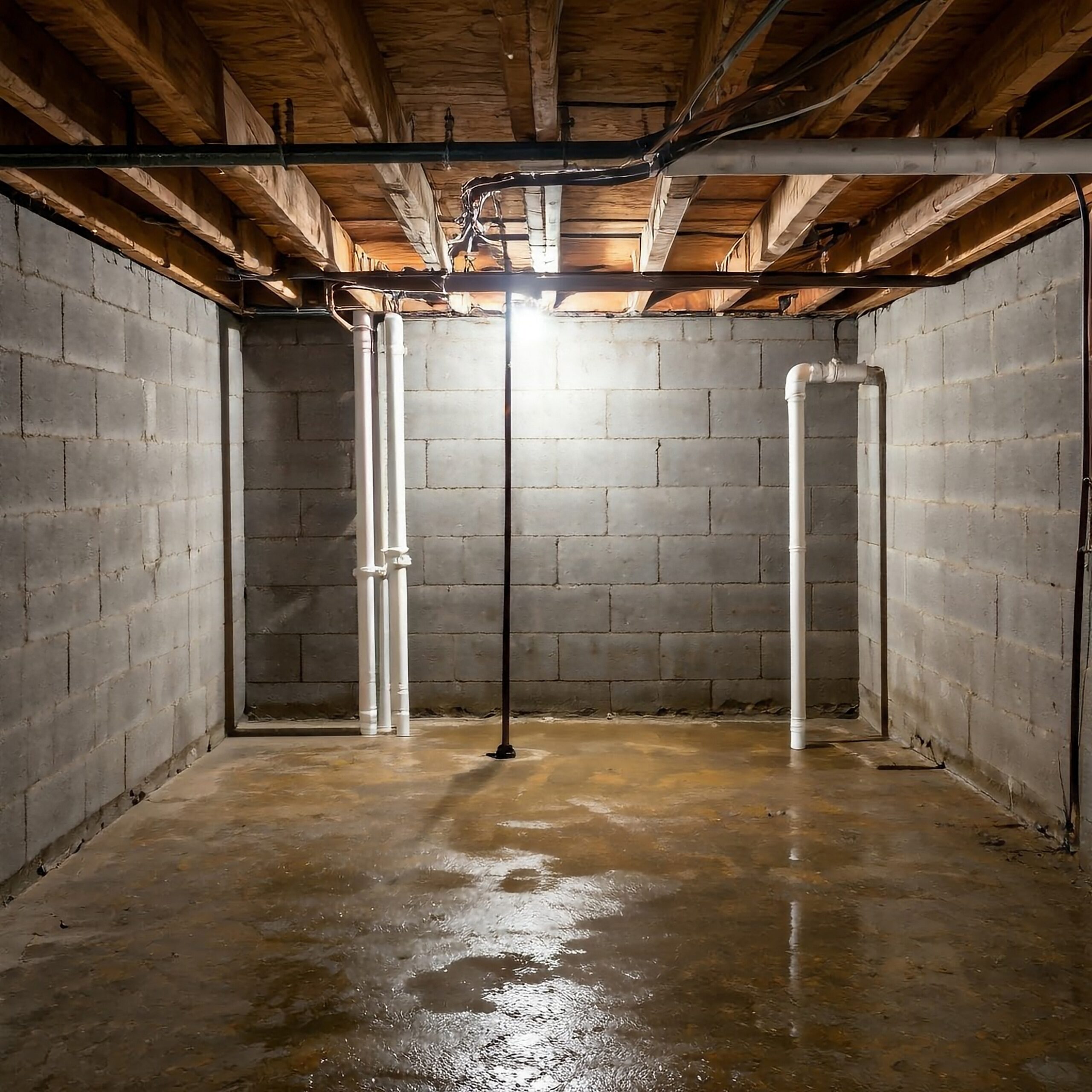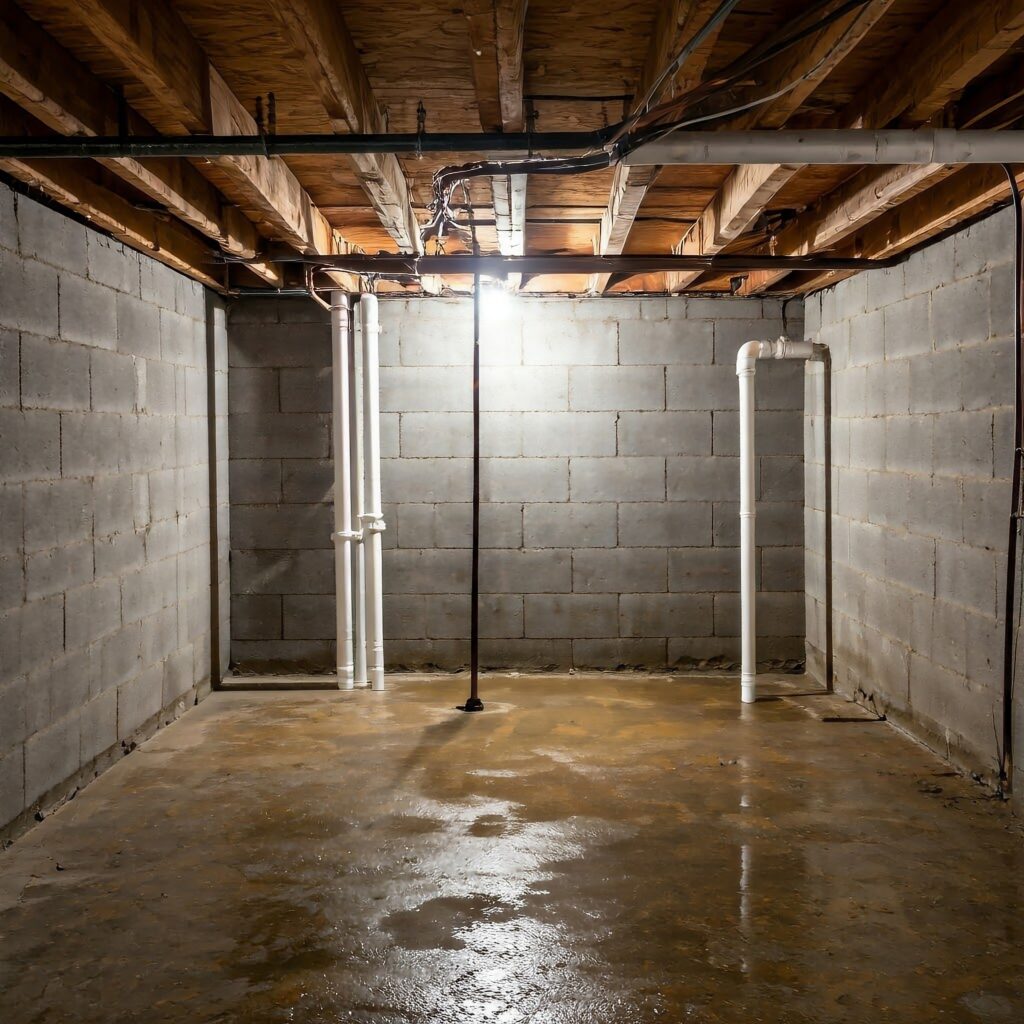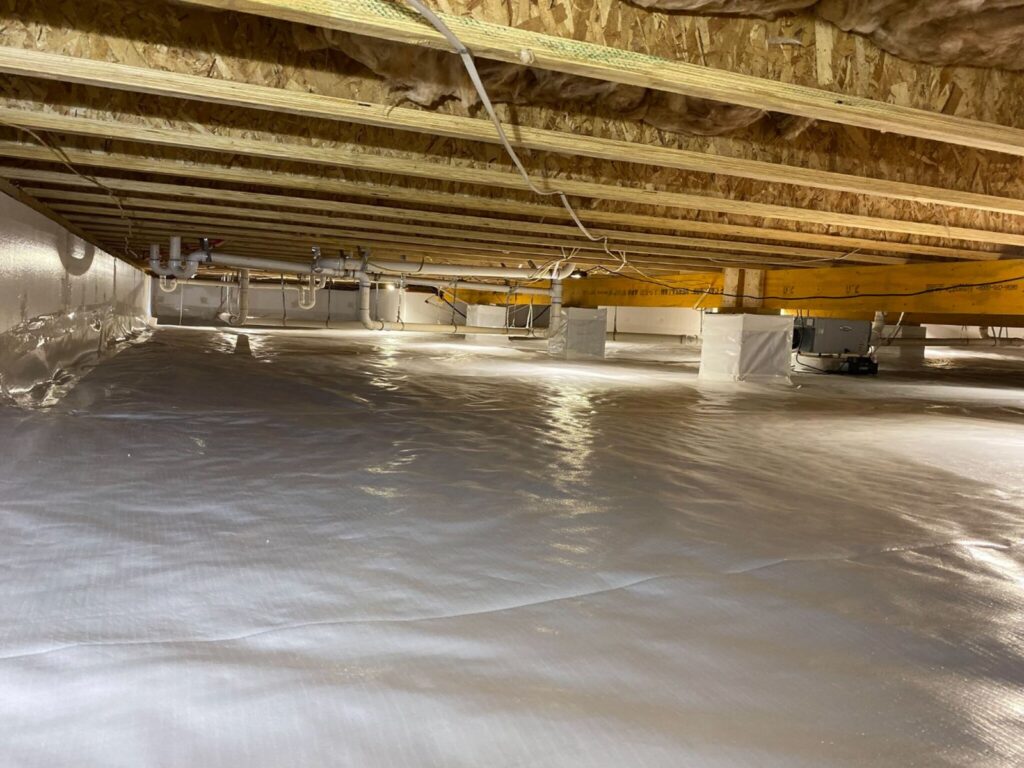You’ve patched cracks, painted on sealant, and maybe even installed a sump pump—so why does your basement still get wet after every big rain? Basement leaks can be persistent and frustrating, but more often than not, the problem isn’t the effort—it’s the approach.
Here are six of the most common basement waterproofing mistakes homeowners make, and how to fix them for good.
1. Only Waterproofing from the Inside
While interior solutions like sealants and drain tiles can help control moisture, they often just manage the symptoms of the problem, not the source. If water is still reaching your foundation walls, it will always find a way in.
Fix it: True waterproofing starts on the exterior. Grading the landscape away from your home, extending downspouts, and applying waterproof coatings to foundation walls outside are essential steps.
2. Ignoring Foundation Cracks
Even tiny cracks in foundation walls or floors can act like a welcome mat for water. Many homeowners seal visible cracks but miss hidden or hairline ones that allow slow leaks over time.
Fix it: Inspect foundation walls regularly. Use injection-based epoxy or polyurethane for permanent crack repairs, and consider having a professional inspect deeper structural issues.
3. Failing to Maintain the Sump Pump
Your sump pump is your basement’s first line of defense during heavy rain. But if it’s clogged, poorly installed, or doesn’t have a battery backup, it’s not going to save you.
Fix it: Test your sump pump seasonally, clean it, and install a battery backup system to keep it working even during power outages.
4. Improper Grading Around the Home
If your yard slopes toward your home, you’re inviting water to pool near your foundation. This overwhelms your waterproofing system and can lead to serious seepage.
Fix it: Reshape the grade around your home so it slopes away at least 6 inches over the first 10 feet. Add compacted soil and proper landscaping to assist water flow.
5. Using Cheap or Inadequate Materials
DIY kits, paint-on sealants, and generic waterproofing products may look good initially, but they often break down or peel within a few seasons.
Fix it: Use professional-grade waterproofing systems with vapor barriers, membrane coatings, and proper drainage. These may cost more upfront but will save thousands in repairs later.
6. No Exterior Drainage System
Even the best sump pump can’t handle all the water if there’s no way for it to exit or be redirected from your foundation.
Fix it: Install (or upgrade) an exterior French drain system and ensure downspouts discharge at least 10 feet away from the house. Consider trench drains if you live in a high-water area.
Final Thoughts
Basement waterproofing isn’t just a weekend project—it’s a strategic system. Whether you’re dealing with recurring water damage or planning to finish your basement, avoiding these six common mistakes can make the difference between a dry, healthy space and a musty, mold-prone mess.
If your basement is still leaking, it might be time to take a step back, reassess your strategy, and invest in a long-term solution that actually works.



